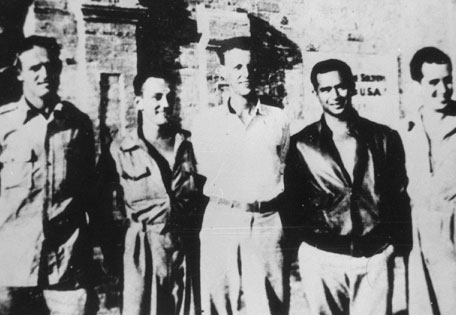Flying tigers a symbol of friendship, then and now
By Joseph Catanzaro, Li Yang,Huang Zhiling and An Baijie (China Daily) Updated: 2015-06-26 07:45
|
The rescued pilots appear in a more relaxed mood, also in 1944. Provided to China Daily |
Unorthodox tactics
Using Chennault's unorthodox tactics, which involved attacking in pairs and making diving passes at the enemy, the squadron destroyed almost 300 Japanese aircraft, losing only 12 of their own. The Flying Tigers, as they came to be known, were formally absorbed into the US military in 1942 as the 14th Air Force under the command of Chennault.
According to Chinese historian Ge Shuya, by 1941, China's fledgling air force had been decimated. The Tigers, which expanded to a force of about 3,000 planes, helped turn the tide.
"For (one period of) 199 days, Japan's 2,452 aircraft bombed one city (Kunming, Yunan province) 465 times," Ge said, "It is the arrival of the Flying Tigers that turned the situation around.
They went on to destroy more than 2,500 enemy aircraft, sink or cripple 45 naval ships and 2.23 million metric tons worth of enemy merchant vessels, and kill more than 66,700 enemy troops.
Flying Tiger veteran David Hayward, 93, said it could not have been done without the assistance of the Chinese. The Los Angeles-based retiree, who flew 53 combat missions in a B-25 bomber between 1943 and 1944, said the skies above wartime China were a dangerous place.







